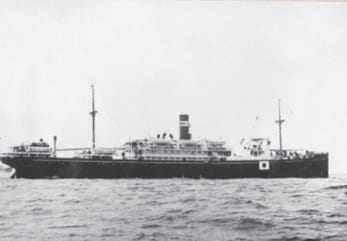On 22nd June 1942 the Montevideo Maru, a Japanese merchant ship, left Rabaul, New Britain bound for Japan with civilian and military Prisoners of War.
An American submarine, the USS Sturgeon, intercepted the ship en route to Hainan Island and torpedoed the Montevideo Maru on 1st July 1942.
The ship sank off the northern coast of Luzon within 10 minutes and only 17 Japanese crewmen and three guards survived.
Australia’s largest maritime disaster
The sinking of the Montevideo Maru and subsequent loss of Australian lives became the largest maritime disaster in Australian history. Controversy still surrounds the way in which the sinking was officially reported. Japan had only recently entered the war and was anxious to ensure that its internees were treated well by Australia. Japan did not notify the International Red Cross of the attack and subsequent sinking of the vessel and it was not until three and a half years later that official notification was given to families in Australia as to the fate of the POWs and civilians. With confusion and hearsay surrounding the sinking of the Montevideo Maru, many relatives did not believe the official story. Some believed that the POWs had been executed in Rabaul. However, there was supporting documentation and evidence to confirm that soldiers and civilians marched to the port to embark on Montevideo Maru.
A group of nurses from Rabaul remained with their patients and were captured by the invading Japanese forces on the 23rd January 1942. These nurses were interned in Japan and were treated mainly with hostility and contempt; the Japanese did not inform the International Red Cross of the nurses’ capture.

